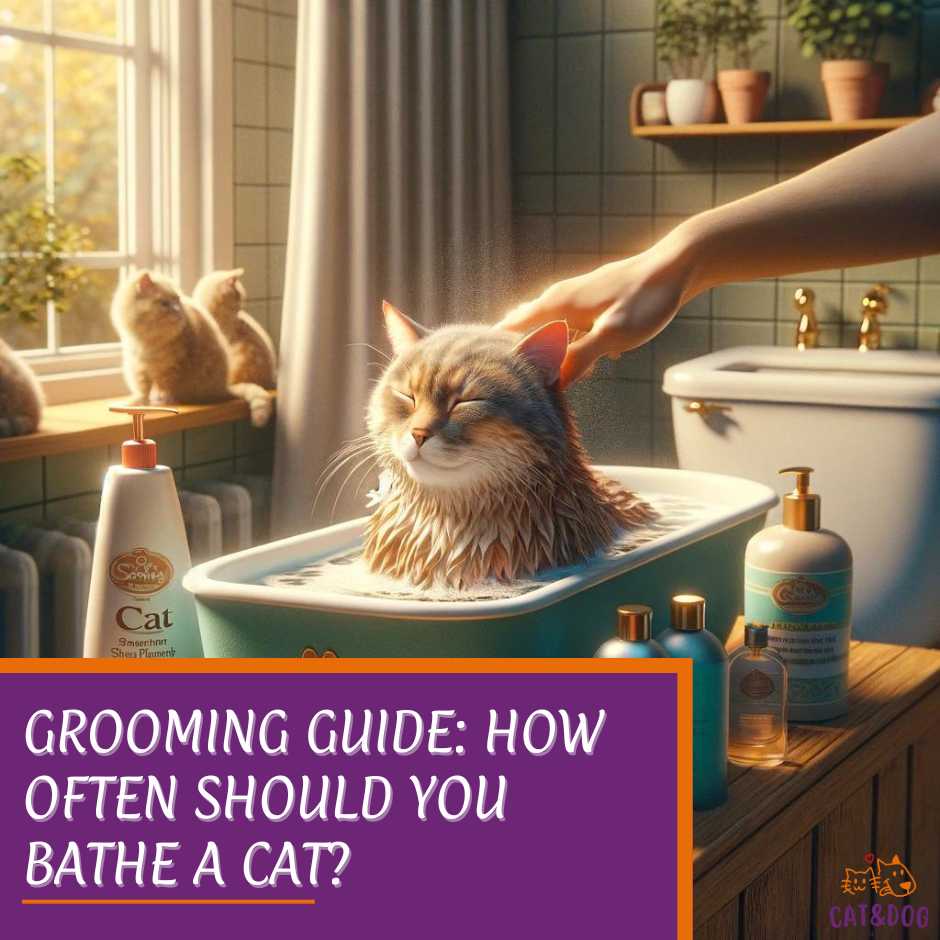Cats are notorious for their self-grooming habits. Ever watched your feline friend meticulously clean herself and wondered, “Why are you so obsessed with cleanliness?”
Well, their fastidious grooming isn’t just about staying clean. It’s rooted in their evolutionary makeup and serves multiple health purposes, including temperature regulation and parasite control.
Grasping why your cat spends so much time licking her fur helps you appreciate these instincts and enhances your bond with your pet. (1)
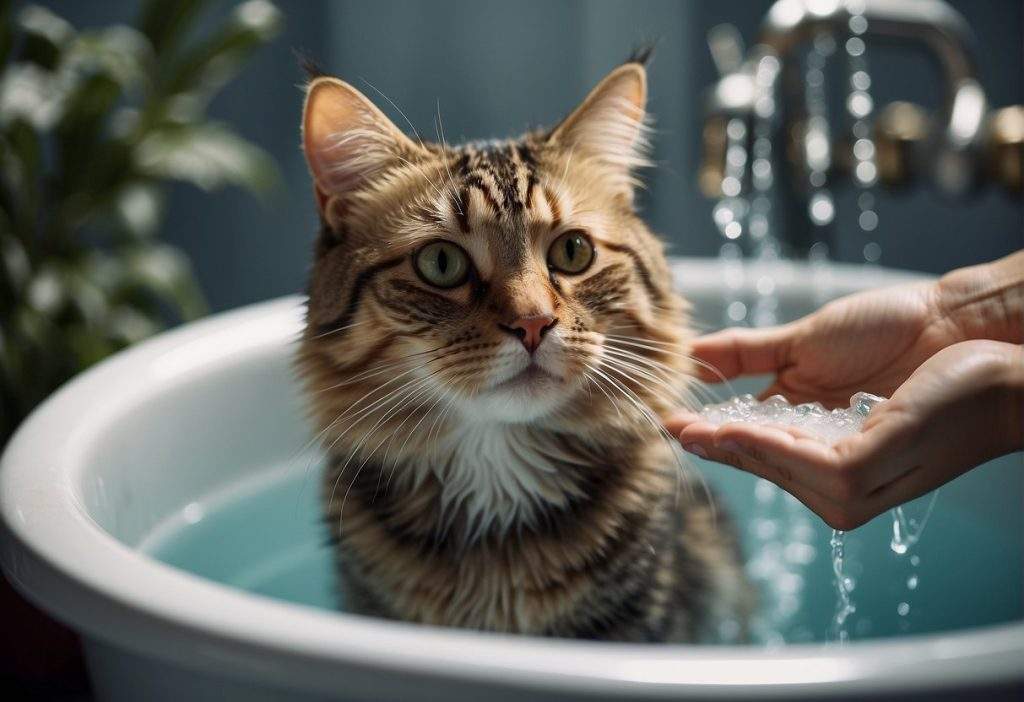
You might find yourself contemplating the necessity of bathing your cat, considering their diligent grooming rituals.
Sure, cats are equipped with their own miniature ‘tongue-brush,’ but that doesn’t mean they won’t need an occasional helping hand.
Situations such as getting into something particularly unpleasant, dealing with a medical condition, or perhaps owning a breed with special grooming needs.
Like the Sphynx long-haired beauties can all call for a human intervention—a bath with gentle strokes to remove any tangles or mats caught in their barbs and saliva, with the help of natural detanglers.
Key Takeaways
- Cats have powerful grooming instincts for health and hygiene.
- Human intervention in grooming is sometimes necessary for cats.
- Bathing your cat can deepen your companionship and address specific health concerns.
Understanding Feline Grooming: How Often Should You Bathe a Cat?
Natural Grooming Habits:
- Frequency: Several times a day—Cats are thorough self-cleaners! (2)
- Tools: Their tongue, teeth, and paws serve as their grooming kit.
- Purpose: Cleansing, temperature control, and stress reduction.
You might have heard that cats and water are archenemies, right? But in reality, it’s not that they can’t handle a splash; they might just not see the need for it with their self-grooming superpowers.
Sure, they might balk at a bath, but that’s because they’re already fantastic at keeping themselves squeaky clean.
However, there are times when bathing a cat is necessary, and understanding your cat’s natural grooming behavior can help you determine when to give them an actual bath.
For example, if your cat has gotten into something sticky or dirty, a bath may be necessary.
When bathing your cat, it is important to use a sink or tub filled with a few inches of warm water and to only wash the parts that need it.
This will help make the experience less stressful for your cat and minimize the risk of getting scratched.
Note: The advice provided in this post is intended for informational purposes and does not constitute medical advice regarding pets.
For an accurate diagnosis of your pet’s condition, please make an appointment with your vet.
Cats and Water:
- Common Misconception: All cats despise water.
- Reality Check: They’re just not used to it because their grooming is generally enough.
So there you have it—your whiskered friend’s grooming routine is a well-oiled machine, and unlike dogs, they often don’t need our help to stay clean.
Next time you see your furry companion working their magic, just know that they’ve got it all under control—no bathtub necessary!
The Role of Human Intervention in Feline Grooming
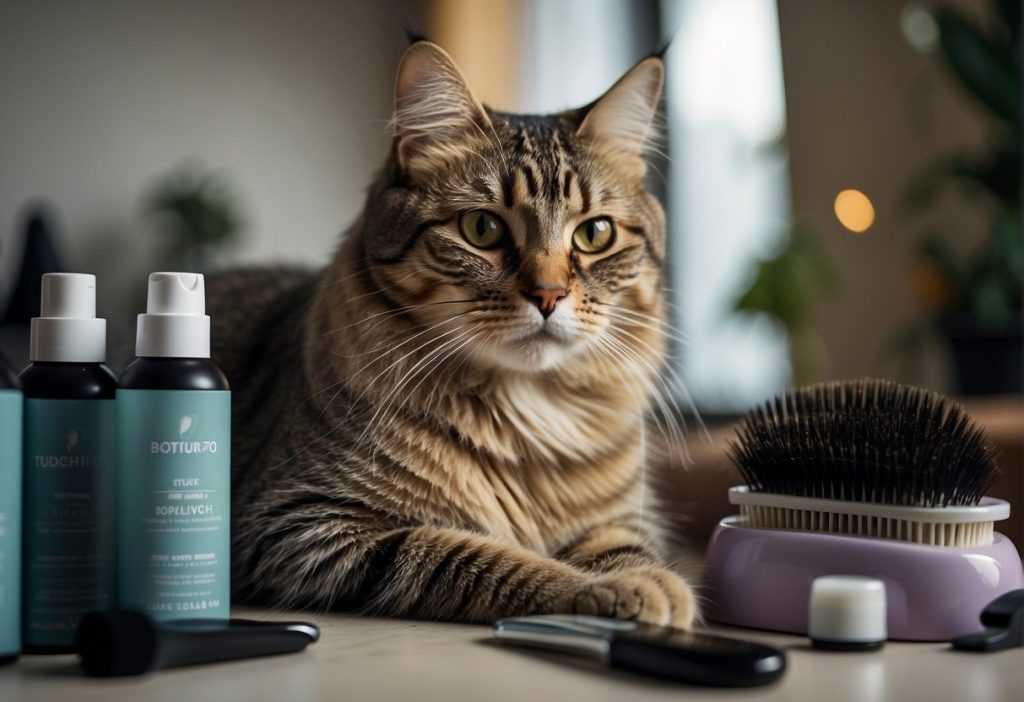
First off, let’s talk about health reasons. Your furry friend might need a bath if they’ve encountered:
- Skincare issues: If dandruff or a skin condition is present, a specially formulated shampoo can be a game-changer.
- Obesity or arthritis: These conditions might prevent them from reaching all their nooks and crannies. (3)
Or, what about that time they rolled in… something unspeakable? There are substances cats can’t remove themselves, including:
- Toxic chemicals: Like motor oil or household cleaners — yikes!
- Sticky stuff: Chewing gum isn’t a chic fur accessory.
And, don’t forget special grooming needs! Some breeds with long hair or no hair at all, such as Persians or Sphynxes, rely more heavily on your grooming expertise.
| Coat Type | Bathing Frequency Recommendation |
| Long-haired | Every 4-6 weeks |
| Short-haired | Less often, monitor for dirt |
| No hair (e.g., Sphynx) | As advised by your vet |
Keep in mind, that you’re not aiming to disrupt their natural grooming rhythm.
Overbathing can dry out their skin and cause more harm than good. When in doubt, a dab with a damp cloth might just do the trick, and always opt for cat-approved shampoos.
Remember, your little lion’s fur coat is their crowning glory. So, let them do their thing, and only lend a hand when the situation begs for it!
Enhancing Your Relationship Through Grooming
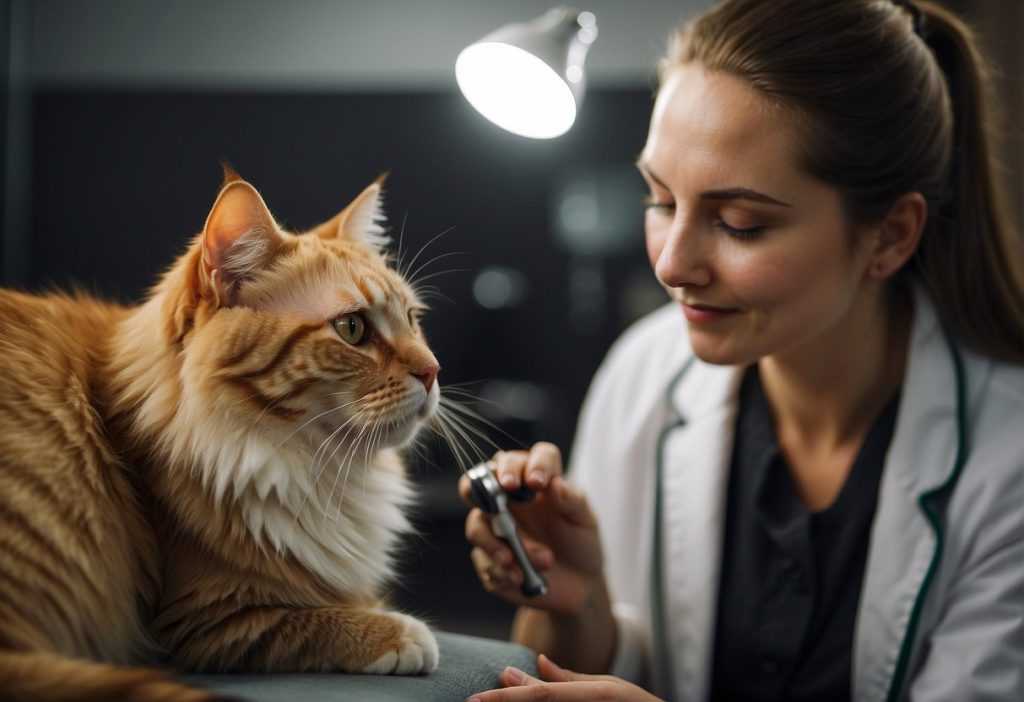
A gentle brush or a soothing bath might not just clean your cat, but also deepen your grooming into an enjoyable ritual for your furry friend can transform it from a chore to a cherished moment.
Start with a Soft Brush
Begin by choosing a soft-bristled brush; this can make all the difference. Brushing not only keeps their coat shiny but also offers:
- Quality Time: A dedicated grooming session is a one-on-one time your cat will learn to look forward to.
- Trust Building: Regular brushes allow your cat to grow more comfortable and trusting of your hands. (4)
Tips for a Stress-Free Bath
Cats and water don’t always mix, but with patience, baths can be bonding moments:
- Prepare the Right Atmosphere: A calm environment helps. Try a quiet bathroom, a non-slip mat, and lukewarm water.
- Ease Them Into It: Gradually introduce your cat to the idea of a bath with gentle petting and soothing words.
- Positive Association: Treats and praise during and after the bath reinforce good associations.
Remember, not all cats will need frequent baths; for some, a bath every few months suffices unless they’re particularly dirty.
The key is patience and making each experience as positive as you can. It’s like a spa day, just for your cat!
By thoughtfully integrating grooming into your routine, you nurture not just a clean cat, but a loving companionship.
Behavioral Insights for Cat Owners
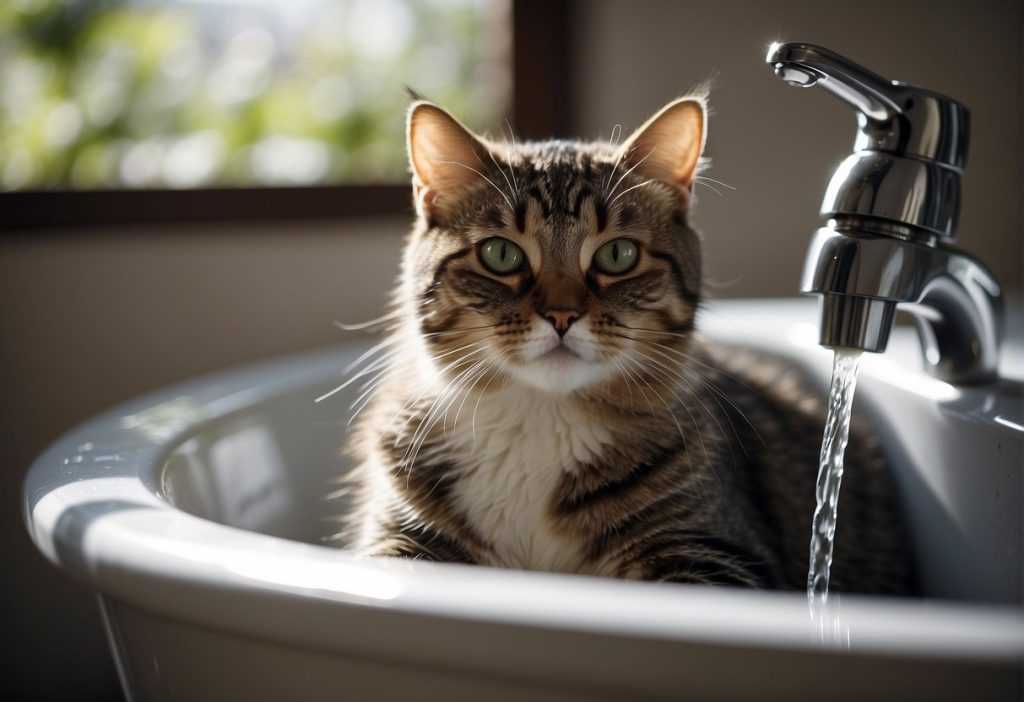
Cats are notorious for their self-cleaning habits, but these actions are more than just about staying clean; they’re a window into your cat’s health and emotions.
- Excessive Grooming: Is your kitty licking their fur more than usual? This could be a sign of stress or discomfort. Keep an eye out for bald patches or red skin, as these could indicate over-grooming.
- Neglecting Grooming: On the flip side, if your cat’s coat starts looking unkempt or matted, it could signal that they’re not feeling well. It might be time for a check-up if you notice a decline in their normal grooming habits.
- Grooming After Petting: Cats often groom themselves after being petted to remove the scent. It’s a cat’s way of saying, “Thanks, but I’ll take it from here!”
- Tail and Head Grooming: When a cat grooms their head and tail, they’re hitting the spots they can’t easily reach. It’s like your cat’s version of that hard-to-reach spot on your back!
Observing these habits is key:
- Self-grooming: Normal self-grooming is a sign of contentment.
- Grooming others: If they groom other pets or you, they are expressing affection.
Remember, each cat is unique, and so is their grooming code! By tuning into these behaviors, you can gain insights into their well-being and build a stronger bond with your whiskered companion.
Keep those eyes peeled, and you’ll be conversing in cat-grooming lingo in no time!
Practical Tips for Supporting Your Cat’s Self-Grooming

Supporting your cat’s self-grooming doesn’t just bond you two closer; it keeps your furry friend looking dapper and feeling happy. Let’s dive into some daily care rituals that can boost your cat’s grooming game.
Provide the Right Tools
Have you ever faced the puzzle of a tangled hairbrush? Your cat feels the same about poor grooming tools. Offer a variety of brushes or combs suitable for their coat type.
- Short-haired cats: Soft-bristled brushes
- Long-haired cats: Wide-toothed combs
Equip yourself with a grooming glove for a more hands-on approach. It’s a great way to bond and pull double duty as a pet and groom session.
Healthy Diet for Glowing Fur
What’s on the menu today? Cats need a nutrient-rich diet with the right mix of omegas to keep their coat shiny and skin healthy. Look for food with:
- Omega-3 and Omega-6 fatty acids
- High-quality protein sources (5)
Keep the fresh water flowing too; hydration is key to preventing dry skin.
Engagement and Play
Let’s play a game! Incorporating play that encourages self-grooming can be a lot of fun. Think about toys that mimic grooming behaviors, like a soft brush attached to a string.
While your cat is “hunting” the brush, it gets a good rub-down. Clever, right?
Remember, grooming isn’t just about looks; it’s about health too.
By providing the right tools, ensuring a nutritious diet, and engaging in playful activities, you’re not just supporting your cat’s grooming habits; you’re enhancing their well-being.
Now, isn’t that a purr-fect thought?
Addressing Grooming Challenges and Health Concerns

Hey there, fellow feline fanatic! Let’s chat about keeping that kitty coat spick-and-span without causing a whisker out of place. If your fur baby treats bath time like a trip to the vet, you’re not alone.
1. The Houdini Escape How do you keep a cat still during bath time? Try a bath mat—yes, the kind that stops you from slip-sliding away. It gives them a sense of security and something to claw at that’s not—you guessed it—your arms.
2. Water Woes Some cats treat water like it’s lava. Ease them into the idea with damp cloths before graduating to a shallow sink. It’s like learning to swim without the diving board.
Myth-busting cats are notorious self-cleaners, right? So, it’s time to bust the myth: cats do not always need a bath, but there are exceptions!
If your fluffer gets into something, particularly yucky, or has a flea infestation, a bath might just be on the agenda.
Health Tip When you do bathe your cat, consider their skin. A vet-approved, cat-specific shampoo will help avoid irritation.
Checklist for a Scratch-Free Bath Time:
- Trim those claws before the bath—you’ll thank me later.
- Brush out any mats, because water + mats = one grumpy kitty.
- Prepare a warm (not hot!) bath.
- Choose a cat-friendly, mild shampoo.
- Offer a treat as a peace offering post-bath.
Remember, baths can be rare, so keep an eye on your furry friend’s coat condition and consult with your vet for personalized advice. Happy grooming! (6)
Beyond Grooming: Creating a Stimulating Environment for Your Cat
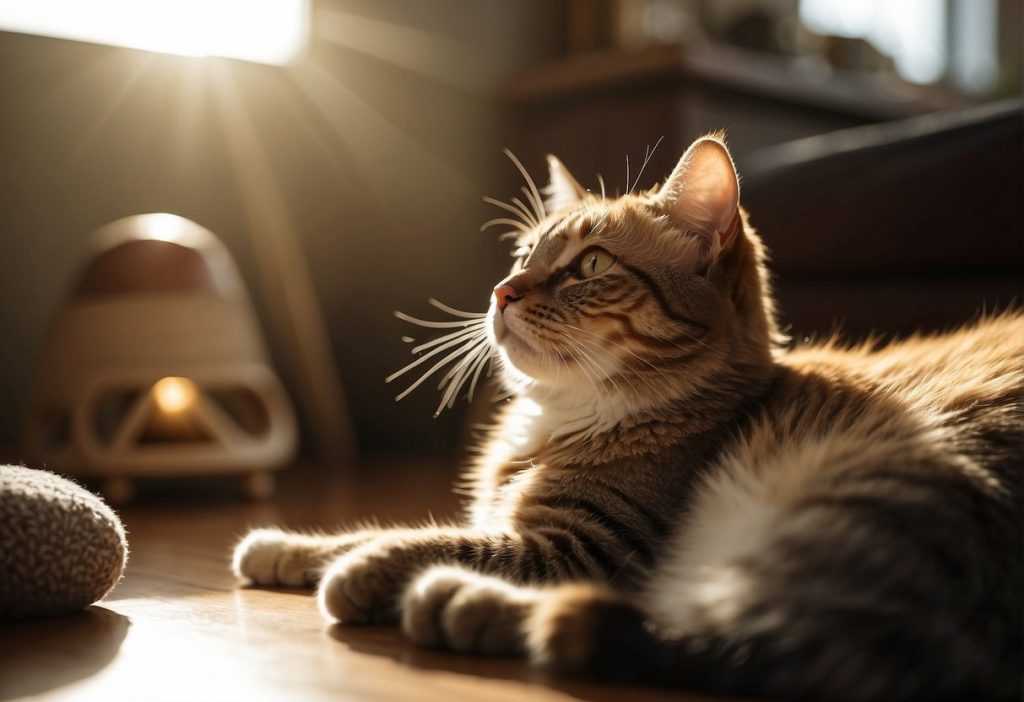
A stimulating environment is like catnip for your cat’s happiness, encouraging those natural grooming behaviors and keeping them purring with contentment.
The Essentials of an Engaging Cat Habitat:
- Climbing Structures: Cats love to survey their kingdoms from a lofty perch. Cat trees or wall shelves will not only make your feline friend feel like the king or queen of the castle, but it’ll also encourage them to stretch, claw (goodbye scratch marks on the sofa!) and keep those muscles sleek.
- Toys, Toys, and More Toys: Whether it’s a laser pointer, interactive feeders, or a simple cardboard box, toys keep your cat active. Have you seen them do the sideways ninja move? That’s a happy cat right there! (7)
Let’s Chew on Some Numbers:
Did you know that engaging your cat in 20 to 30 minutes of play can help prevent obesity, which affects around 60% of cats in the US? It’s true! By setting up a playful home, you’re setting your kitty up for success.
The Little Things Matter:
- Set aside some daily playtime – bonding and encouraging them to prance and pounce.
- Consider planting a small indoor cat garden. Psst, catnip and wheatgrass can work wonders for their digestion and grooming habits.
Creating a home that’s a feline funhouse is the ultimate game-changer for your cat’s well-being.
It promotes not only grooming but also the emotional and physical health that makes every day a good fur day. Remember, a purring cat is a happy cat – and aren’t those purrs just the best sound ever?
Quick Recap
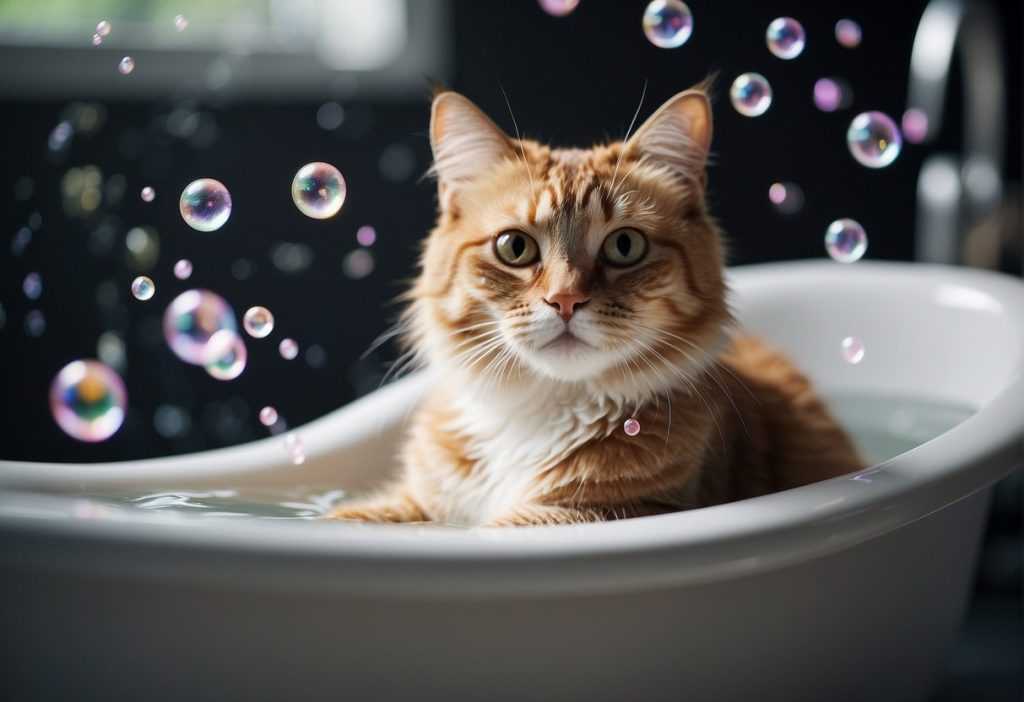
Wondering how often you should bathe your feline friend? Here’s a quick rundown:
- Self-Grooming: Cats are meticulous self-groomers, thanks to their barbed tongues. So, generally, they don’t need frequent baths.
- Bath Frequency: If your kitty gets into a messy situation or has a smelly mishap, a bath might be necessary. Otherwise, every few months is adequate, and potentially even less.
Bathing a cat should be more of an exception than a routine unless specific circumstances apply:
- Long-Haired Breeds: May require baths to prevent mats, alongside regular brushing.
- Health Issues: A lethargic cat due to age or illness may struggle with self-grooming.
Here’s a clear-cut guide:
| Condition | Bath Needed? |
| Healthy and Active | No regular baths required |
| Long Hair, Mats | Yes, every 4 to 6 weeks |
| Sick or Elderly | Judge based on cat’s grooming |
You might have heard that cats and water are archenemies, right? But in reality, it’s not that they can’t handle a splash; they might just not see the need for it with their self-grooming superpowers.
Sure, they might balk at a bath, but that’s because they’re already fantastic at keeping themselves squeaky clean.
However, there are times when bathing a cat is necessary, and understanding your cat’s natural grooming behavior can help you determine when to give them an actual bath.
For example, if your cat has gotten into something sticky or dirty, a bath may be necessary.
When bathing your cat, it is important to use a sink or tub filled with a few inches of warm water and to only wash the parts that need it.
This will help make the experience less stressful for your cat and minimize the risk of getting scratched.
Note: The advice provided in this post is intended for informational purposes and does not constitute medical advice regarding pets.
For an accurate diagnosis of your pet’s condition, please make an appointment with your vet.
Frequently Asked Questions
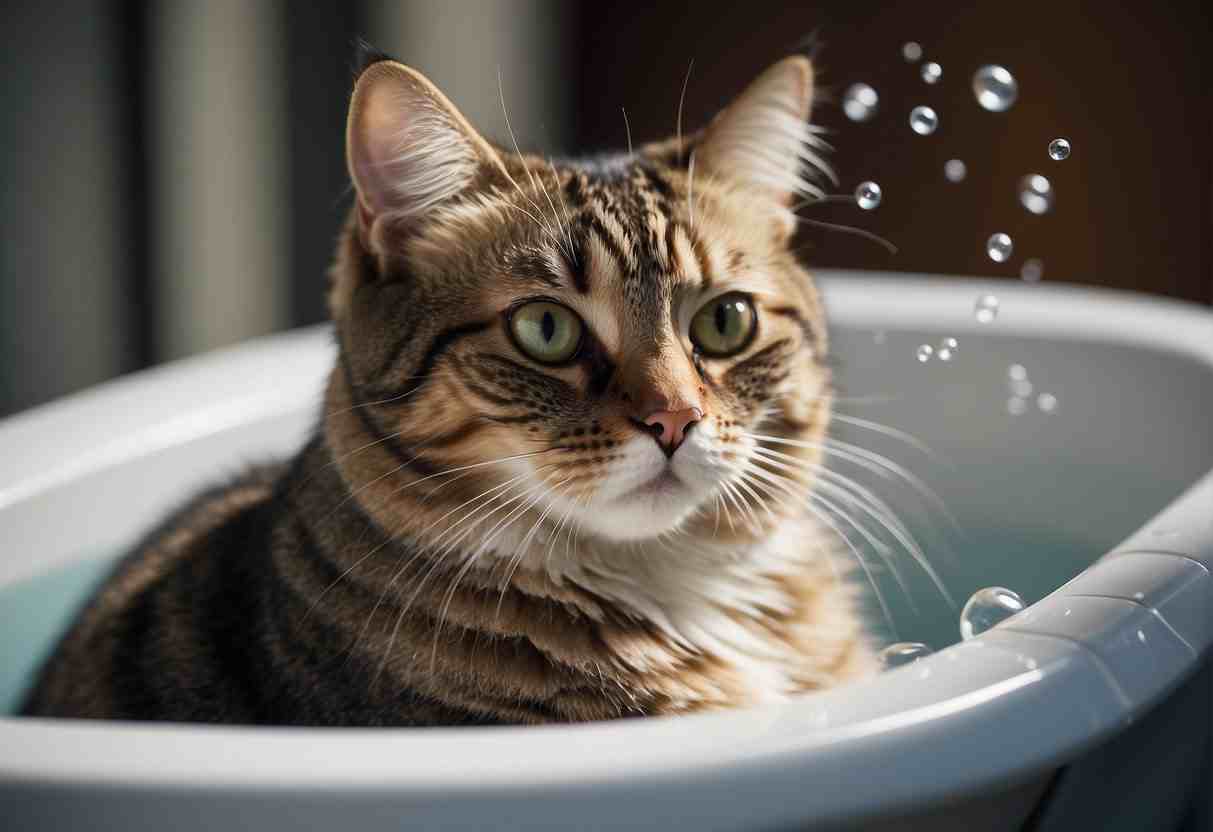
Hey there, cat companions! You’re probably wondering how to keep your furry friend clean without turning bath time into a claw-filled fiasco.
Let’s dive into your top questions about bathing your purr-pal to make sure they stay spick-and-span, while keeping the peace at home.
How often should I bathe my cat if it mostly grooms itself?
Cats are self-cleaning marvels, and most of them do a fabulous job of keeping themselves primed and primed without your help.
However, for cat breeds like Sphynx in which there are known genetic conditions that cause them to produce and secrete an excess amount of skin oil, routine bathing can help decrease the extra debris and the chance of secondary skin infections.
If your cat is healthy and its coat looks good, full baths can often be a rare event. However, for hairless breeds, it is important to bathe them once per week due to their production of excess oils and to avoid skin irritation.
For cats that are more outdoorsy or elderly/overweight, it may also be necessary to help with the grooming process.
Most felines will only need a full bath every 4 to 6 weeks if they are one of the breeds that require regular grooming, or not at all if they tend to their fur themselves just fine.
Can bathing my cat too often cause health issues?
Indeed, overbathing can lead to dry skin and irritation for your kitty.
Their skin naturally produces oils that keep their fur soft and healthy, and too much soap and water can strip these away.
If you’re washing your cat more than required, you might see them scratching more or find flaky spots on their skin, which could be a sign of seborrhea or ringworm.
What are the signs my cat might need a bath?
If your kitty gets into something sticky or stinky, a bath is definitely in order.
Also, if they’ve slacked on self-grooming due to age or sickness, or if their fur seems oily or has dandruff, it’s time to grab the cat shampoo.
An older cat who once was able to stay clean may now struggle with self-grooming, making regular baths necessary.
Overweight cats may also need more frequent baths to ensure all parts of their body are clean.
Frequent scratching or visible dirt are also telltale signs that your older cat may need a bath due to allergies, and it is important to consult with a veterinarian for guidance on proper bathing frequency and techniques for your cat’s specific needs.
How can I make bath time less stressful for my cat and me?
Start by keeping your nerves in check—cats can sense stress. Prepare everything beforehand: a non-slip mat, warm water (not hot!), and cat-specific shampoo.
Introduce your cat to the water gradually, and praise them with soothing tones (and maybe a treat or two) throughout the process.
What should I do if my cat hates water?
Consider alternatives like cat grooming wipes or dry shampoo designed for felines. If a full bath is necessary and your cat is averse to water, try using a damp cloth instead to spot clean.
Sometimes, professional groomers or veterinary clinics can offer their expertise, saving you the scratches.
Are there specific shampoos I should use for my cat?
Always opt for a shampoo specially formulated for cats.
Their skin has a different pH than ours, and human shampoos can irritate. Look for gentle, hypoallergenic options, especially if your cat has sensitive skin.
Steer clear of anything with essential oils or perfumes, as these can be harmful to felines.
Additionally, make sure to use a medicated shampoo recommended by your veterinarian or a local pet store for any specific skin conditions your cat may have.
It’s also important to have a brush on hand to help remove any matted fur and knots before bathing your cat.
And don’t forget to use a handheld showerhead for easier and more efficient bathing!

